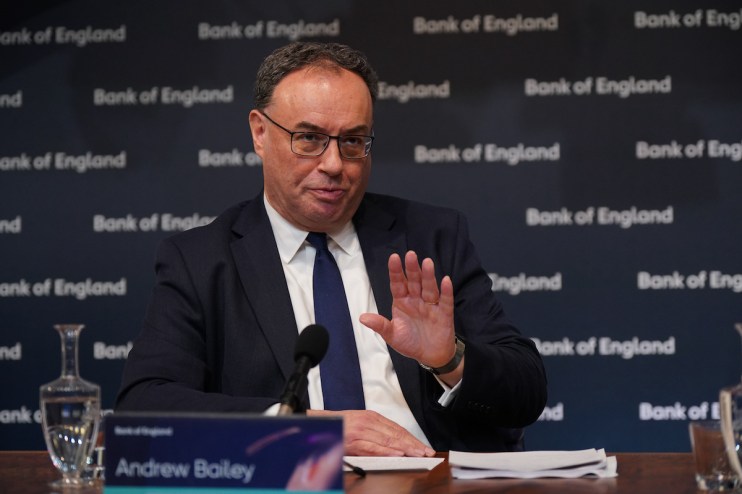The markets are wrong. Bank of England interest rate cuts are on the way

In a huge swing, markets are now only fully pricing in one rate cut by the Bank of England for 2024. But Chris Dorrell argues that, as things stand, more cuts are likely
It’s been a whirlwind ride for traders trying to divine when the Bank of England will start cutting interest rates.
At the beginning of this year markets thought the Bank would start cutting interest rates this week, if they had not started already. As many as five interest rate cuts were fully priced in over the course of the year.
This always looked far-fetched, but now markets have gone too far the other way and are only fully pricing in one rate reduction (although a second is seen as very likely).
What’s changed for markets? Over the first few months of the year, traders slowly accepted that policymakers at the Bank of England were not joking when they said rate cuts were some way off.
The Bank was never drawn into the new year interest rate exuberance, constantly stressing that interest rate cuts were still some way away. Since these were the people actually in charge of setting interest rates, it always seemed odd to essentially ignore them. Either way, eventually traders got the message.
The other change has been the persistence of US inflation, which has come in ahead of expectations for three consecutive months.
Stubborn inflation has forced the Fed to wait before cutting interest rates. In its policy announcement last week, the Fed said “there has been a lack of further progress toward the Committee’s two per cent inflation objective” in recent weeks.
CME’s Fedwatch puts just a 42 per cent chance of a rate cut coming in September. This has influenced market bets in the UK, with major moves in the rate curve coming shortly after the hot inflation figures.
But neither of these factors reflect any underlying change in domestic inflationary dynamics.
Although the latest batch of inflation and wage growth figures came in slightly ahead of expectations, most indicators are moving broadly in line with expectations. Indeed, inflation is expected to return to target in April.
There are, of course, reasons for caution. Services inflation remains at six per cent while wage growth also remains too hot, but these are slowly starting to move back towards more acceptable levels.
And it’s worth bearing in mind a couple of other points. Monetary policy has to be forward looking, addressing what policymakers perceive to be the underlying trends. This is why Andrew Bailey, the Bank’s Governor, has said in the past that interest rate cuts do not have to wait until inflation is at two per cent.
So long as services inflation and wage growth are on track to fall to target-consistent levels on a sustainable basis then the Bank is safe to cut rates.
The other point is that policy can remain restrictive even if the Bank chose to cut interest rates. Inflation is falling, which means the real interest rate – the interest rate adjusted for the impact of inflation – is rising.
This was noted in the Bank of England’s last meeting. “The Committee recognised that the stance of monetary policy could remain restrictive even if Bank Rate were to be reduced, given that it was starting from an already restrictive level”.
We know that a few policymakers are edging towards joining the MPC’s dovish outlier, Swati Dhingra, in voting for a cut. Dave Ramsden said he’s “more confident” inflation is returning to target while Bailey himself said cuts were “in play”.
This week is too early to start cutting rates given signs that some inflationary pressures remain.
However, June should definitely be on the table. There’s two rounds of inflation and labour market figures before then. It goes without saying that these figures will influence June’s decision. But if they come in line with expectations, continuing recent trends, then markets may be proved wrong again.